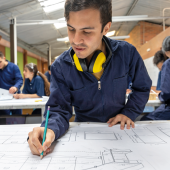Malaysia Conference: Embedding sustainability

Embedding sustainability in the construction industry – with all the challenges and opportunities this brings for building engineers – was centre stage at this year’s international conference in Kuala Lumpur.
Preventing fire safety has a direct link to sustainability,” the then-CABE President Joseph Birt told delegates in his opening address.
Fires have numerous environmental consequences, including wasted energy, toxic substances released into the air by smoke and the chemicals produced by firefighting foam and water, which is washed into drains, rivers and lakes, impacting on surrounding flora and fauna.
“We plan for a building to last 60, 80, 100 years into the future. If there is a fire, the embodied energy in that building is lost. We’re back to square one with all of the energy and carbon associated with a rebuild scheme,” he said.
The Grenfell Tower fire in London, which claimed 72 lives in 2017, was “preventable had we in the construction sector done our jobs better”. It has “changed everything in the UK for the construction industry”.
Dame Judith Hackitt’s review of regulations for higher risk buildings over 18 metres in height introduced the concept of the golden thread. Under this, fire safety design and strategy should continue for a building’s entire lifecycle and “should be implemented into the management of the building, its ongoing maintenance and any refurbishment work in the future”.
The Grenfell Tower fire demonstrates the importance of the work of all built environmental professionals and “reminds us of the potential consequences when we get it wrong, the need for due diligence and attention to detail and the increased importance of our competency,” Birt added. “We must be competent at the job we do and the greater levels of scrutiny when it does go wrong.”
Rebuilding trust
CABE Chief Executive Officer Dr Gavin Dunn noted how the impact of the Grenfell Tower fire “is changing everything from planning through to how you own, design and operate buildings”, not just in the UK but worldwide.
“Unless we can get the basics right, we are never going to tackle the really big challenges,” he said. “The clock is ticking and the built environment is a big part of the problem, but potentially a big part of the solution.
“Grenfell Tower was a project to improve housing for some of the most vulnerable and poorest people in society – to reduce their energy bills, keep warm in winter and reduce the environmental and climate impacts of that building. It was a well-meaning project that went horribly wrong.”
The Grenfell Tower fire “wasn’t a one-off but a systemic failure,” Dunn added. In the UK alone, 450,000 homes have similar defects, with 1.2 million families still living in homes that might not be safe.
“The construction industry has lost the public’s trust, it has lost the trust of politicians and lost the trust of the media – we are the new bankers.
“We have to rebuild that trust and we have to start fixing these systemic issues if we are even to start to tackle the many challenges we face on the sustainability front.”
Each professional needs to look in the mirror and ask what contribution they made “to create a market and circumstances where these terrible things were possible and why we can’t fix some of them,” Dunn added. To rebuild trust, the profession needs to embrace competency, with engaging younger professionals as the crucial first step.
“Professionals are waiting until their mid-careers before they go on the journey of professional competence. If you engage with them earlier you can embed standards and behaviours, discussing what it means to be a professional.
“But we’re going to have to bring them through faster than we have in the past. Some of these young people will be asked to take on projects that are far riskier at an earlier stage in their careers because there are not enough people available.”
Compliance
Tay Hao-giang, past President and current board member of the Institution of Fire Engineers, suggested good compliance had placed too much emphasis on new buildings “when across the entire construction industry 90% are occupied”. Fire risks and hazards for occupied buildings accumulate over time, he warned.
“Is a fire protection system going to work 10, 15 or 20 years down the road? If you do not manage the fire risk, you can never prevent disasters from happening.” He called for a holistic approach to crisis prevention and management, focusing on the “probability of fire incidents and their consequences”, with protecting the occupants the top priority.
“We need implicit thinking and explicit preparedness if we are seriously looking at fire prevention and disaster prevention.
“We need to apply lessons from past incidents if we are not going to repeat mistakes. Yet there are still similar fire incidents around the world. Why? Because nobody bothers to look at past incidents,” he said.

The New York Convention
A cornerstone of international arbitration and resolving commercial disputes, The New York Convention has 172 countries as signatory states and obliges nations to recognise and enforce arbitration awards in other countries. As such, it is considered “the most successful convention ever in the history of mankind”, Asian International Arbitration Centre Director Datuk Sundra Rajoo said.
However, national courts can refuse to enforce an arbitral award, he warned, if its enforcement is contrary to public policy. “This is quite controversial because public policy varies from country to country. This is almost the wildcard in a lot of situations.” Malaysia follows the convention closely as a “seat of arbitration”, with the country’s courts consistently enforcing foreign awards.
“We are all trying very hard, especially in Asia, to ensure The New York Convention is a working document and is incorporated into our domestic law,” he said. “But try not to arbitrate if you can because it’s going to be a very expensive affair if you seek cross-territorial enforcement.
“Sometimes for businesses, it is the only way to do it because of the universal enforceability of arbitral awards. That is the main thing that comes from the convention – the main business tool for resolving cross-border global disputes is only by arbitration.”
Arbitration
Ir Harbans Singh KS, a leading arbitrator, mediator and adjudicator, said sustainability disputes are posing new challenges to the construction industry. These involve “novel issues in view of the rather nebulous and wide ambit of the subject”, arguing that all parts of the industry as well as third parties and the public “will be impacted and can become potential disputants”.
Most sustainability disputes centre around interpretation and are “very technical in nature” – chief among them are contracts and climate-related weather events.
Settling these disputes increasingly involves alternative dispute resolution (ADR) methods such as negotiations, amicable settlements, mediation or conciliation, adjudication, expert determination or the involvement of dispute resolution advisors or boards.
In Malaysia, the most common ADR method is “court annexed mediations”, under which “you litigate, you mediate and everything is OK, otherwise you go back and litigate again,” he added. But two years ago, the country’s Chief Justice introduced a wider “practice direction”, allowing the courts to pass the mediation process to the Asian International Arbitration Centre, the Malaysian Mediation Centre and the Penang Justices of Peace, which he described as “a very good development because litigation is not cheap and the courts are inundated with cases”, especially in the aftermath of Covid-19.
“When the talking and communication stops, the number of disputes goes up. You have to keep talking. When emotions are running high, disputes are ultimately due to ego issues.”
Transforming construction
HSS Engineers Berhad’s Head of Digital Engineering Ir Ronan Collins told delegates that AI tools have the potential to transform the construction industry.
The process of developing ChatGPT started pre-Covid in 2019 with a $1bn investment by Microsoft, which subsequently put $10bn into a new company called Open AI last January.
“When you see quantities of investments of that scale, you know this is genuine and this is very important for us as engineers,” he said. “It has the potential to revolutionise the way we interact with technology, helping us solve complex problems and automating mundane tasks to make use of a vast amount of data.”

AI can allow engineers to take hundreds of documents in PDF format, digitise and scan them to look for standard clauses around arbitration and mediation, while identifying disparities between those documents. The software can “read vast quantities of data far quicker than we can as engineers,” he added.
“Once you have done that, you can then identify key issues and terms, find risks in the documents and make sure you’re complying with legal and project requirements.
“You can focus on using your engineering abilities and your creativity to solve real problems. By streamlining your workflow, you can add better value to your client.
“The tools that are being developed now can be used to optimise construction schedules by looking at the last 15 or 20 years of projects to identify how they’ve been done, how they performed and identify ways of making the programme more reliable. Ultimately, where AI is going in construction is cost savings.”
Concrete façade
LWC Alliance Pte Ltd’s Managing Director Jay Fung looked at the Hive project at Nanyang Technological University in Singapore, where he worked closely with architect Thomas Heatherwick to customise the building’s façade using precast concrete.
This involved looking closely at the architectural design to “choose the colours, the form, the shape and also the textures of the façade”. The aim was to create an “architecturally diverse building with soul and character”.
Overall, the façade comprises 1,050 precast panels on the outside of the building, adding a pigment to the surface of each panel for a pink colour instead of the traditional grey look.
Each panel had two surfaces – one rough and one smooth – and were laid out into the formwork after the partners had explored their individual profile, the 3D effect and overall effect on the sculptural quality of the façade.
“Each panel can only be used there and nowhere else. This makes the architecture special,” he added.
“The collaboration has changed the way I work, and it has become my mission to do something more interesting than just make normal concrete that you paint over.”
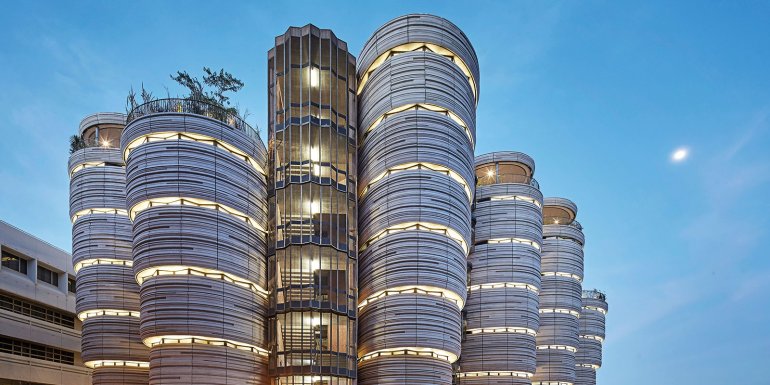
Innovative concrete materials
Dr Payam Shafigh, Associate Professor in Universiti Malaya’s department of architecture, outlined how structural lightweight aggregate concrete (SLWAC) and roller-compacted concrete pavement (RCCP) can make a significant indirect contribution to sustainability in the construction industry.
Sustainability has a fourth pillar, he argued, with technical joining the traditional pillars of environmental, social and economic. Generally, materials are renewable or recyclable, but technical sustainability means their “performance, quality and service life”.
RCCP is a stiff concrete mixture that is placed and compacted with rollers to achieve a similar performance to asphalt, he told delegates.
“The best bituminous asphalt after five years needs some repair, and within ten years the repair is equivalent to the cost of construction. If the pavement is RCCP, the repair will start in 15 years and will be minimal.”
SLWAC achieves strengths comparable to conventional concrete, but weighs 35 to 40 times less, he added. Natural lightweight aggregates are obtained from natural porous rocks such as pumice and scoria, but in Malaysia structural level concrete can be made from palm oil shells.
“We can listen and learn from nature a lot. Palm oil shells are much harder than stone or rock and they are abundantly available. Other aggregates that we use in industry are artificial, but these are natural.”
The advantages of using structural lightweight concrete also include insulation value and sound reduction.
“Although it is not sustainable itself and is about two to four times more expensive, we have a significant saving on other materials and it contributes significantly to overall sustainability.”
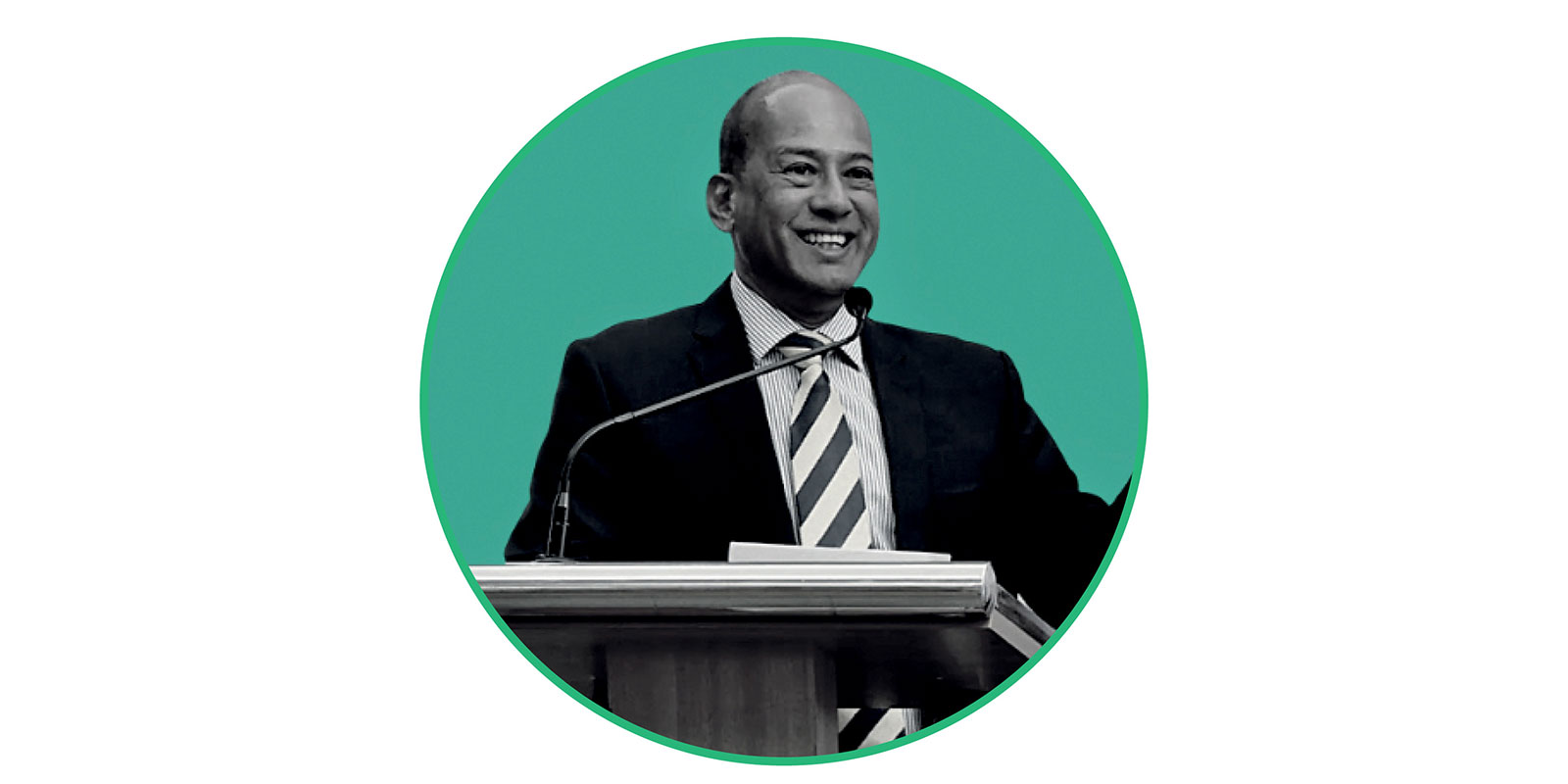 Datuk Sundra Rajoo, Director, Asian International Arbitration Centre
Datuk Sundra Rajoo, Director, Asian International Arbitration Centre
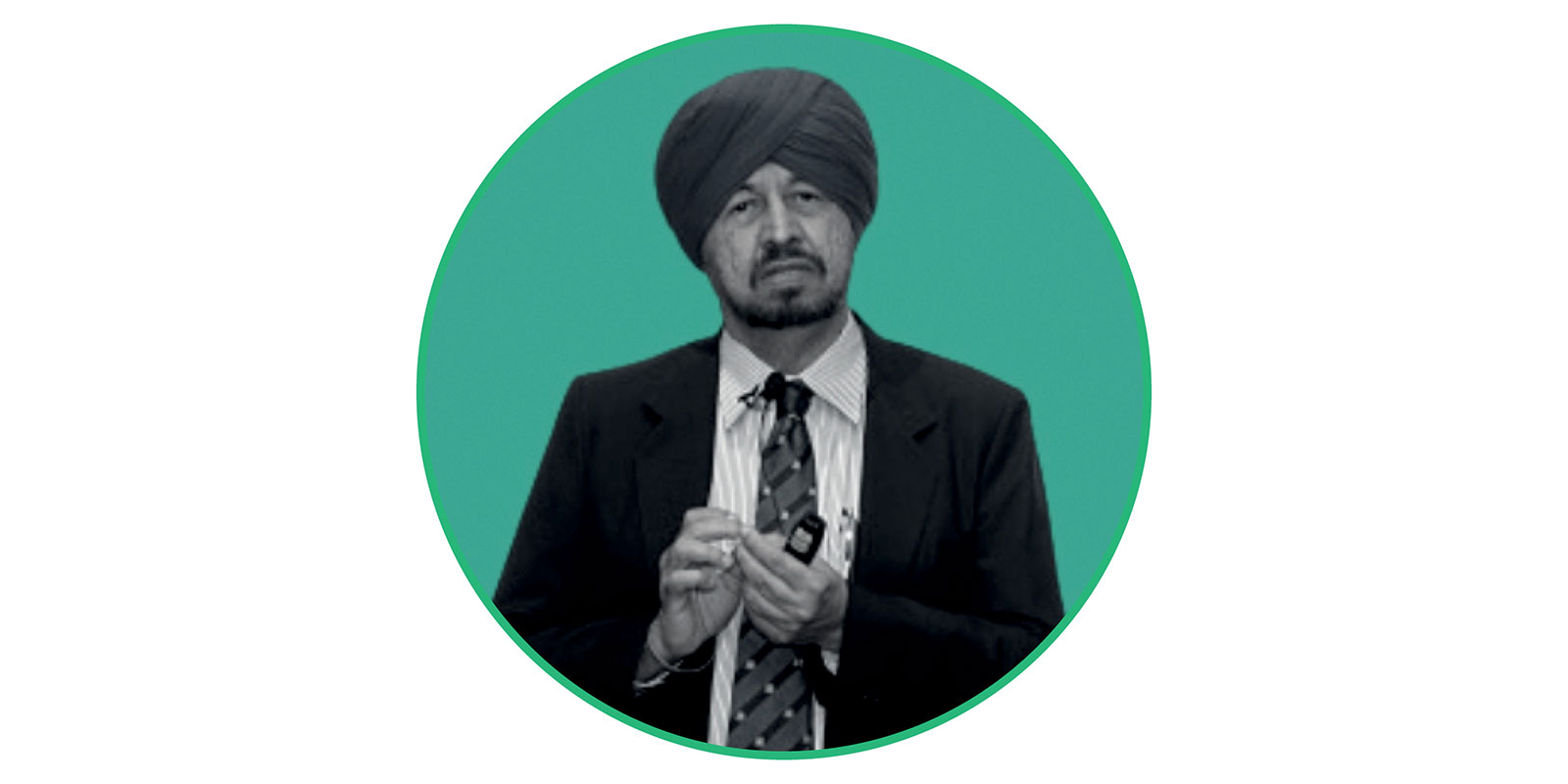 Ir Harbans Singh KS, a leading arbitrator, mediator and adjudicator
Ir Harbans Singh KS, a leading arbitrator, mediator and adjudicator
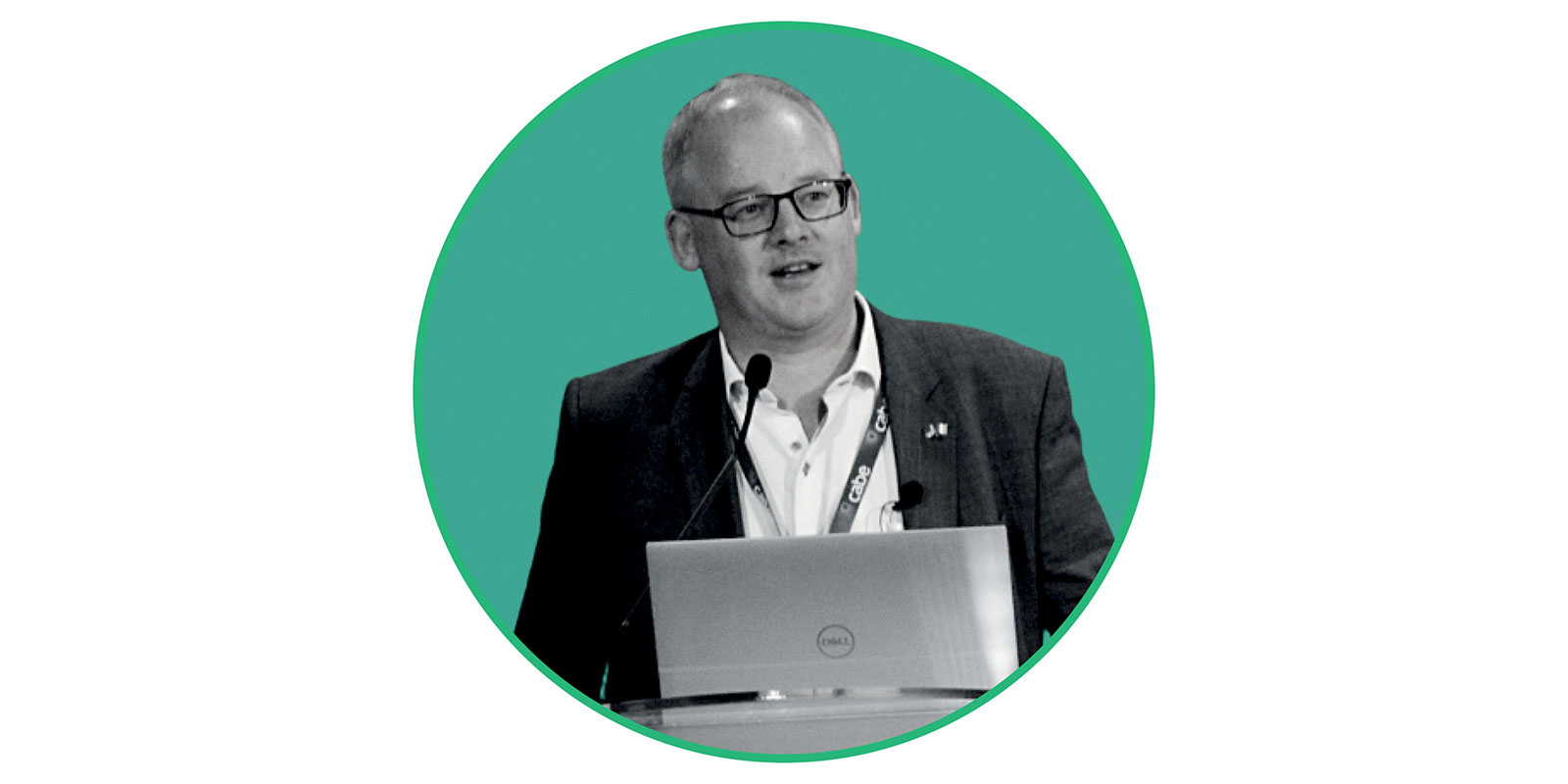 Ir Ronan Collins, Head of Digital Engineering, HSS Engineers Berhad
Ir Ronan Collins, Head of Digital Engineering, HSS Engineers Berhad
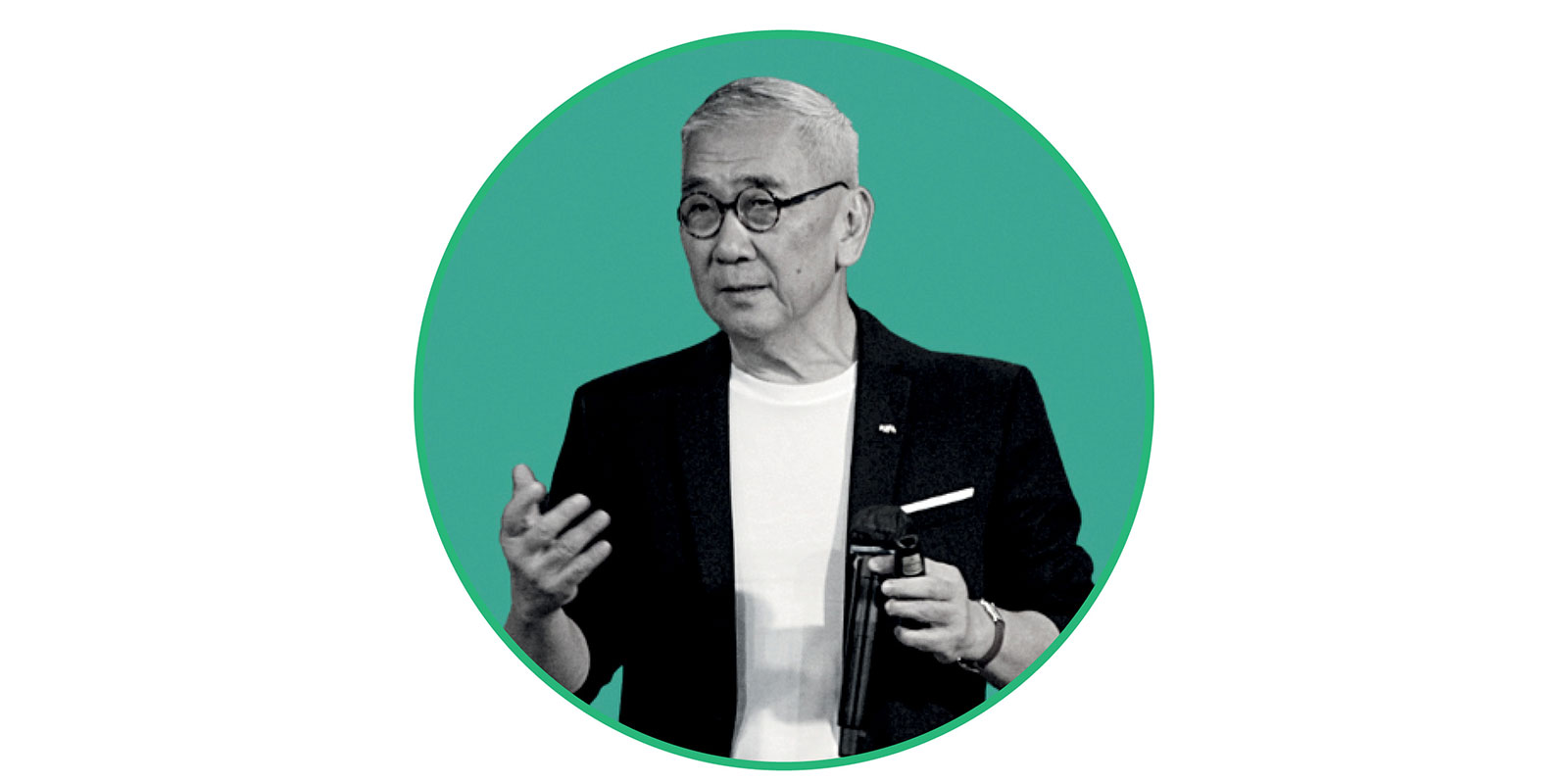 Jay Fung, Managing Director LWC Alliance Pte Ltd
Jay Fung, Managing Director LWC Alliance Pte Ltd
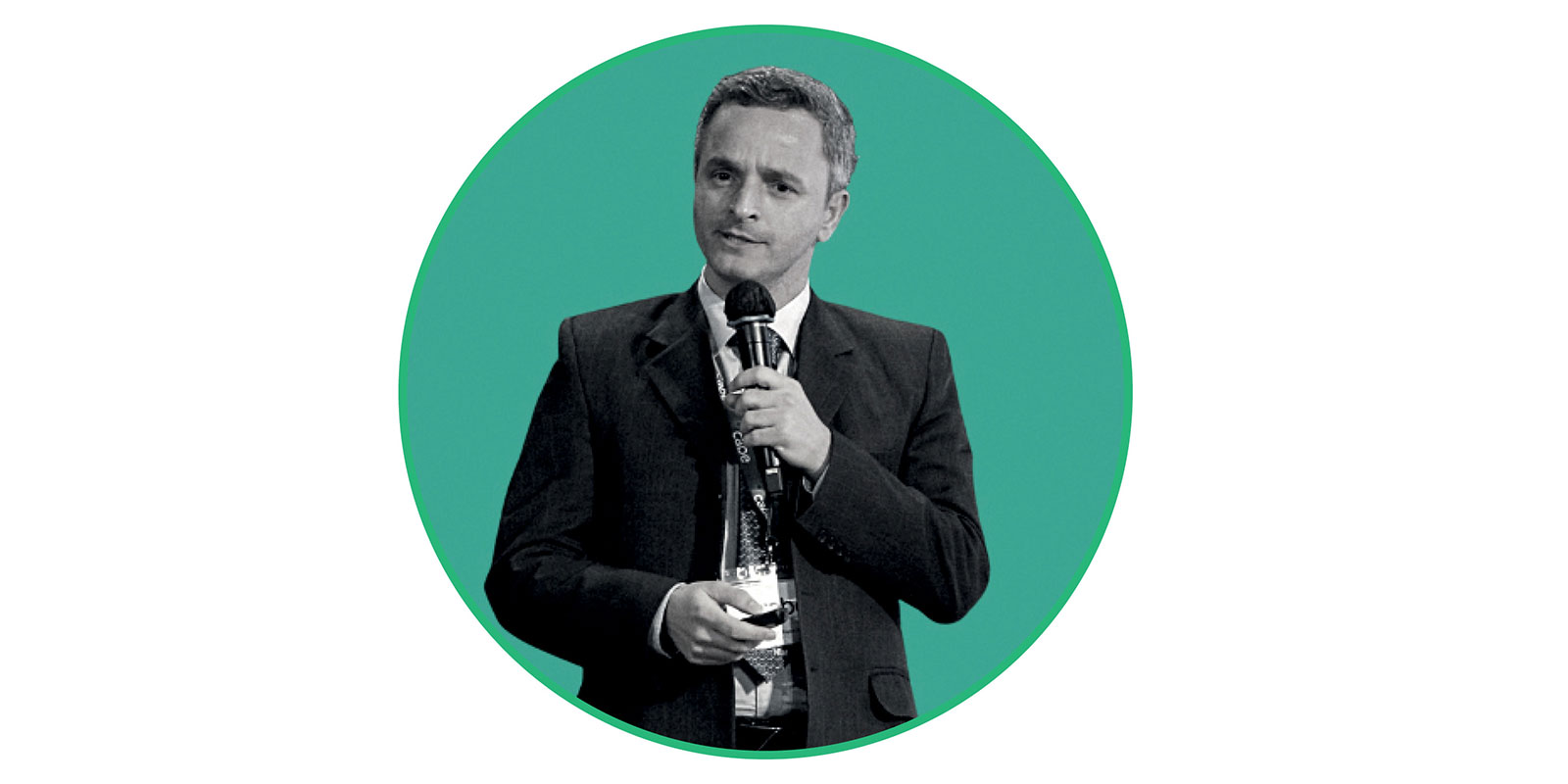 Dr Payam Shafigh, Associate Professor in Universiti Malaya’s department of architecture
Dr Payam Shafigh, Associate Professor in Universiti Malaya’s department of architecture
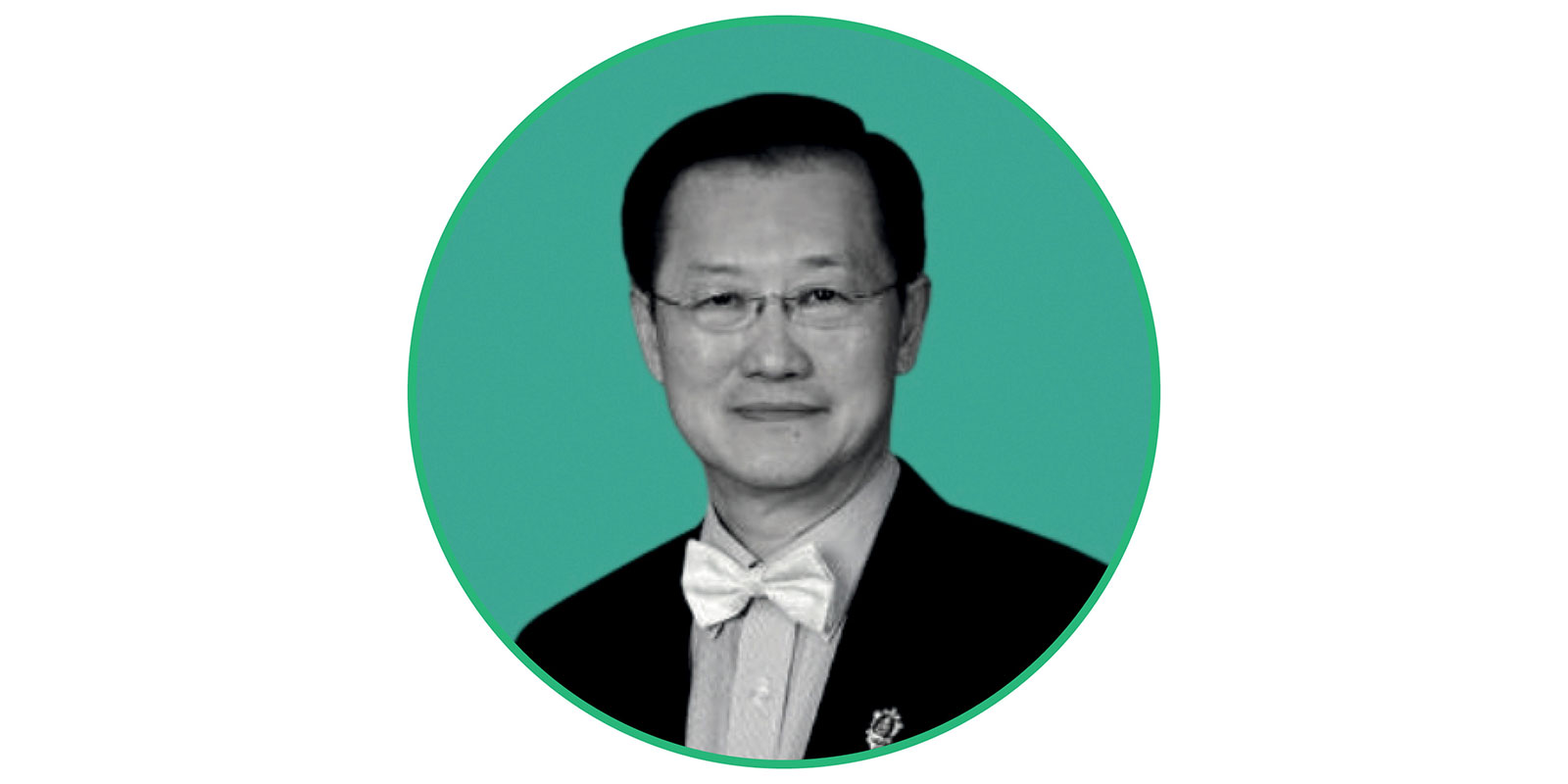 Tay Hao-giang, past President and current Board Member of the Institution of Fire Engineer
Tay Hao-giang, past President and current Board Member of the Institution of Fire Engineer


